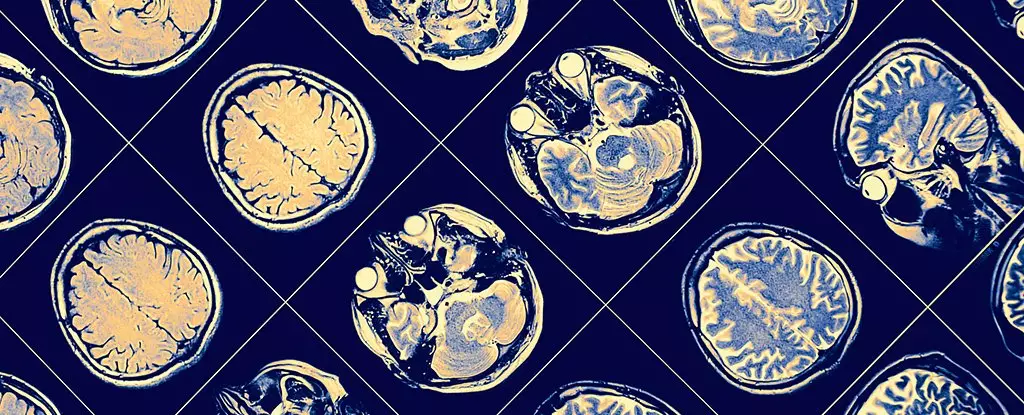The path to understanding Alzheimer’s disease is fraught with complexities, particularly when examining genetic factors associated with its onset. While the general consensus is that individuals with specific genetic predispositions, such as the PSEN2 mutation, are almost certain to develop Alzheimer’s by the age of 50, a remarkable case has emerged that challenges this notion. A recent study has documented a patient who not only carries the PSEN2 mutation but has also retained cognitive abilities well into his sixties, defying established medical expectations.
The PSEN2 mutation is known to accelerate the accumulation of amyloid-beta plaques in the brain—a defining characteristic of Alzheimer’s disease. In families where this mutation is prevalent, such as in the case of the study subject’s lineage, multiple members typically present symptoms of the disease in their early fifties. This man, however, remains an anomaly. How did he manage to elude the neurodegenerative decline that so many of his relatives faced? This question piqued the interest of researchers, as understanding his resistance could reveal insights into the mechanisms that underlie Alzheimer’s.
Led by prominent researchers including population geneticist Maria Victoria Fernandez from the International University of Catalonia and neuroscientists from Washington University in St. Louis, the decade-long study meticulously documented the man’s cognitive functions through regular memory and cognitive tests. Surprisingly, despite the presence of amyloid-beta plaques in his brain, he showed no signs of cognitive impairment, a sharp contrast to the expected outcomes for someone with the PSEN2 mutation.
Intriguingly, the study revealed a lower-than-anticipated level of neuroinflammation in the man’s brain compared to typical Alzheimer’s patients. Moreover, any detected tau proteins—the culprits behind a different neurotoxic form of plaque—were mainly localized in the occipital lobe, the brain’s visual processing area. This remarkably confined distribution of tau may have offered a protective effect, potentially explaining why the man’s cognitive abilities have remained intact.
An essential aspect of this study is its exploration of the man’s genetic makeup. While genetic testing ruled out the protective mutations found in other resilient cases, researchers identified nine genetic variants absent in his affected family members. Six of these variants were previously unlinked to Alzheimer’s yet were implicated in brain inflammation and protein folding. This raises significant questions about the interplay between genetics and environmental factors, particularly in the mitigation of Alzheimer’s symptoms.
The study authors suggest that the combination of these unique genetic variants along with the man’s career as a mechanic, where he was frequently exposed to extreme heat, might contribute to his unusual resistance to the disease. Exposure to high temperatures may activate specific cellular pathways responsible for stress responses and protein regulation, which could promote resilience against neurodegenerative conditions.
While the detailed investigation of only one individual comes with inherent limitations—it remains difficult to draw broad conclusions—it does illuminate the potential for undiscovered protective mechanisms against Alzheimer’s. The pattern of restricted tau pathology observed in this man’s brain might emerge as a crucial feature for future study into therapeutic avenues. The data suggests that the anticipated connection between amyloid accumulation and cognitive decline is not as straightforward as previously thought.
This case serves as a beacon of hope and curiosity in the ever-evolving narrative of Alzheimer’s research. It prompts researchers to reconsider existing models that dictate how genetic predispositions correlate with the actual onset of dementia. By diving deeper into the genetic intricacies and considering external factors like environmental stressors, researchers may unearth new paths for intervention—offering potential strategies for delaying or even preventing the onset of Alzheimer’s symptoms in genetically predisposed individuals.
The case study of this extraordinary individual compels the scientific community to re-evaluate long-standing beliefs about Alzheimer’s disease and its relationship with genetic mutations. As scientists continue to unravel the complexities of Alzheimer’s, the insights gained from this man’s resilience may serve as a stepping stone toward novel approaches in understanding and possibly mitigating the effects of this devastating disease. The interplay between genetics, environment, and disease progression offers a fertile ground for future research, suggesting that there is still much to be learned about the human brain and the factors that influence its health.

